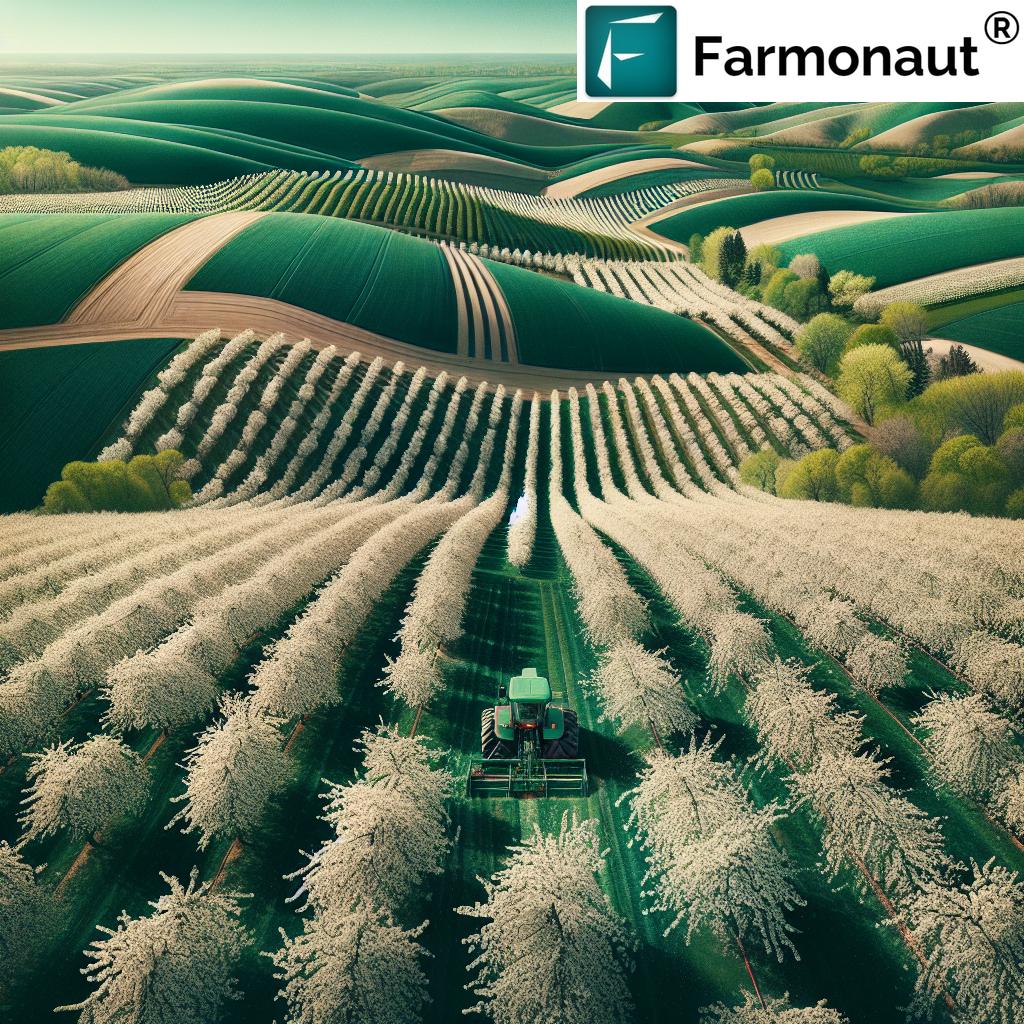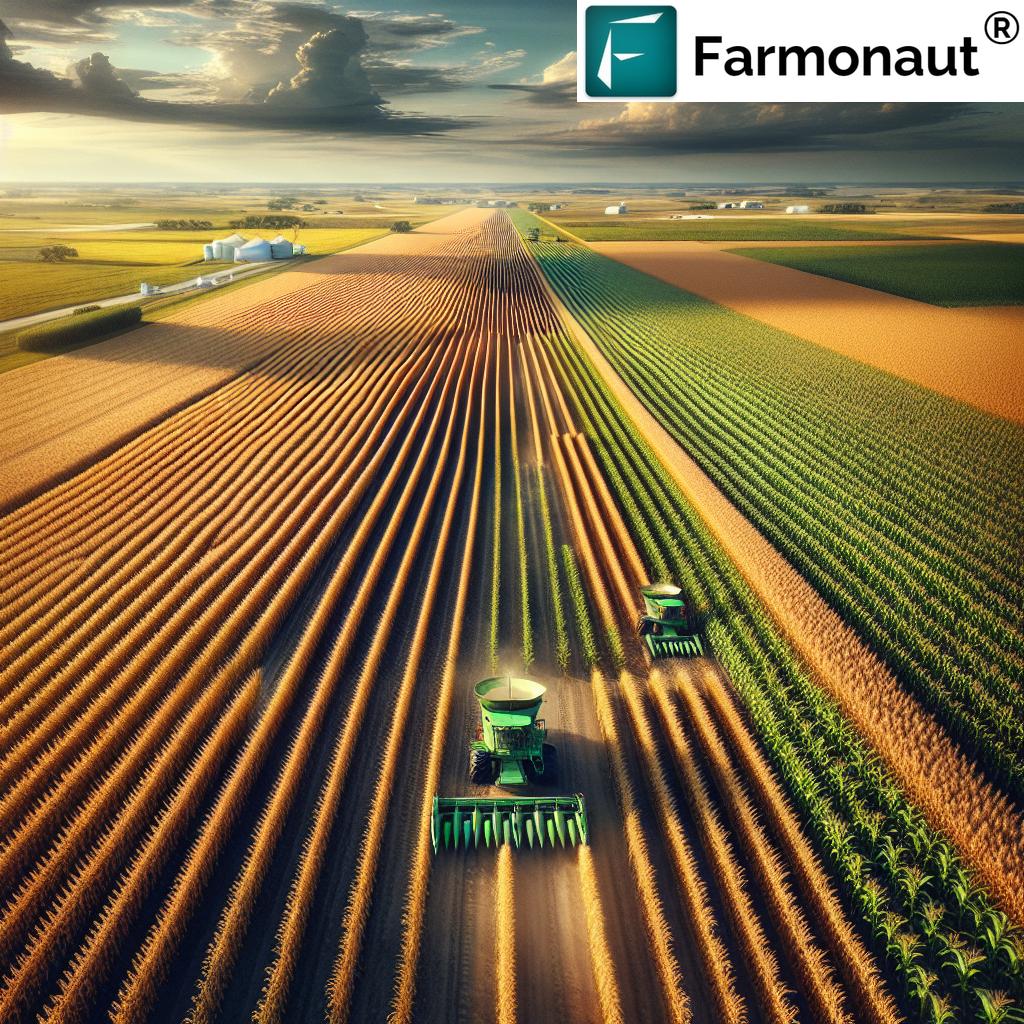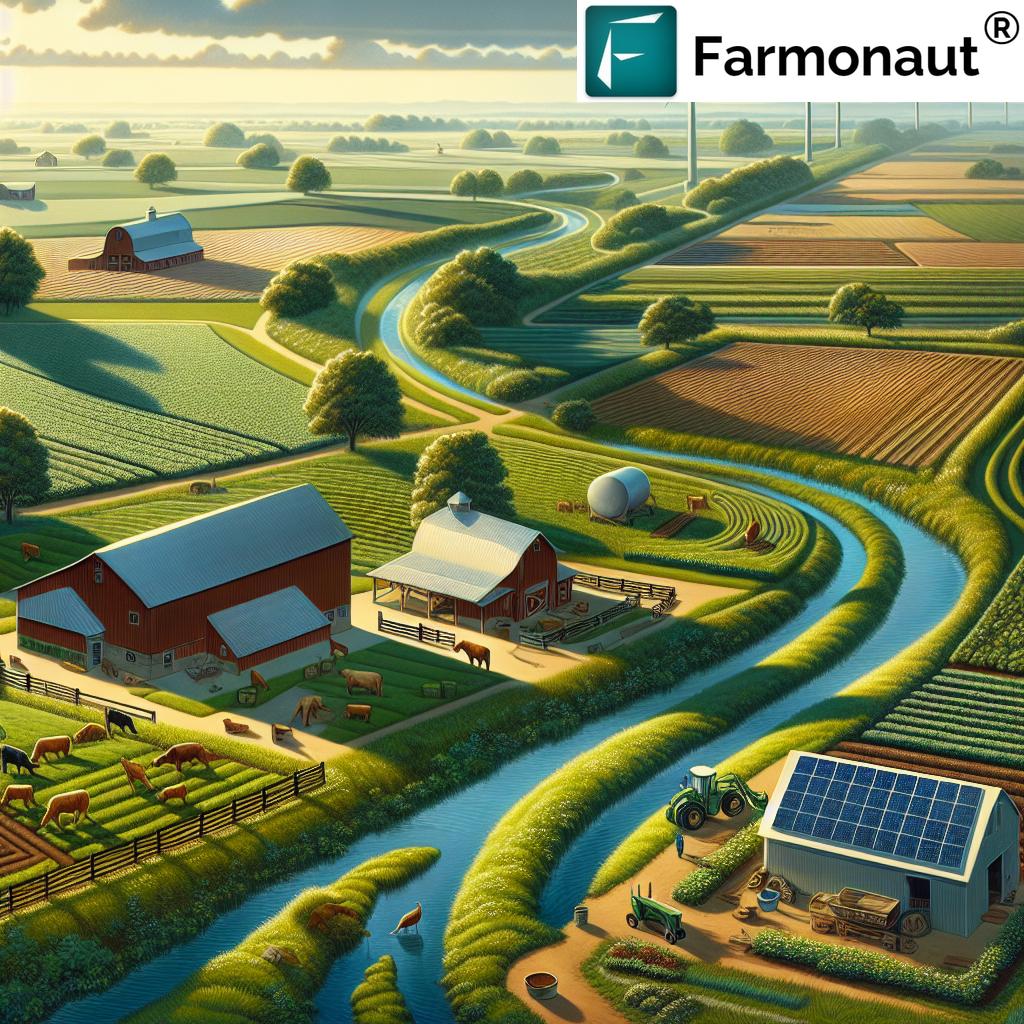Agricultural Land Management Hackensack NJ: Top 2025 Tips
Table of Contents
- Summary: Advancing Agricultural Land Management in Hackensack, NJ: A 2025 Perspective
- Introduction: The Imperative of Sustainable Land Management in Hackensack, NJ
- Trivia: Urban Pressure & Soil Conservation in Hackensack Agriculture
- Key Challenges in Agricultural Land Management Hackensack NJ
- Top 2025 Strategies for Advancing Agricultural Land Management Hackensack NJ
- Comparative Strategy Impact Table
- Role of Technology & Data: Future-Proofing Hackensack’s Agricultural Land Management
- FAQ: Agricultural Land Management in Hackensack, NJ
- Conclusion: Building a Sustainable Future
- Farmonaut Resources & Subscription Information
Summary: Advancing Agricultural Land Management in Hackensack, NJ: A 2025 Perspective
Agricultural land management in Hackensack, NJ is at a pivotal crossroads in 2025. With rapid urban development threatening limited farmland within Bergen County, sustainable techniques and smart technology are more essential than ever. The region must match soaring food demands with environmental preservation, soil health, and community interests, forging a balanced approach amidst unique geographic, economic, and climate challenges.
This comprehensive guide explores the latest agricultural land management Hackensack NJ strategies for 2025, highlights high-impact solutions for soil conservation and urban farming, and demonstrates how innovation—like satellite monitoring platforms—are shaping the region’s future.
“By 2025, over 70% of Hackensack NJ’s farmland will face urban pressure, challenging sustainable land management strategies.”
Introduction: The Imperative of Sustainable Land Management in Hackensack, NJ
Hackensack, New Jersey serves as a unique crossroads between urban expansion and traditional agriculture. Located in Bergen County near the dynamic New York metropolitan area, Hackensack’s landscape is emblematic of challenges confronting many urbanized communities in the United States in 2025: urban sprawl, increasing population density, shrinking land availability, and changing climate patterns. Here, balancing urban development with sustainable farming is more than a policy mission—it’s a vital necessity for food security, environmental stewardship, and community well-being.
This article dives deep into the critical issues facing agricultural land management Hackensack NJ, offering actionable strategies tailored to local conditions, emerging technologies, and sustainability-oriented practices for 2025 and beyond.
Key Challenges in Agricultural Land Management Hackensack NJ
Understanding the context for agricultural land management Hackensack NJ requires recognizing the region’s specific challenges, from land use changes to environmental pressures:
1. Urban Growth and Land Fragmentation
- Sprawl: Hackensack’s proximity to New York City stimulates constant demand for new housing and infrastructure, resulting in shrinking open spaces for agriculture.
- Fragmentation: Subdivided lands and smaller farm plots impede large-scale crop planning, making it harder to achieve economies of scale.
2. Soil Degradation and Loss of Fertility
- Degradation: Overuse, compacted soils, and runoff from impervious surfaces diminish agricultural productivity.
- Sensitive Substrates: The hilly terrain in and around Hackensack involves varying soil types, with some zones susceptible to erosion and nutrient leaching.
3. Environmental Pressures and Runoff Management
- Pollutants: Runoff from fertilizer or pesticide applications threatens the Hackensack River and sensitive wetland areas, potentially impacting water quality downstream.
- Climate Change: Intensified rainfall, heat waves, and variable weather demand more adaptive, resilient management practices.
4. Economic and Social Challenges
- Resource Competition: Rising land values and resource costs challenge farmers’ ability to maintain viable operations in the area.
- Community Needs: Demand for local food coexists with the necessity to preserve recreational and ecological open spaces.
“Soil conservation techniques could help Hackensack farmers improve crop yields by up to 15% by 2025.”
Top 2025 Strategies for Advancing Agricultural Land Management Hackensack NJ
Let’s look at the most effective agricultural land management Hackensack NJ strategies for 2025, tailored for sustainability, urban compatibility, soil health, and economic viability.
1. Precision Agriculture & Smart Monitoring
-
Precision Agriculture: Modern agriculture leverages Internet of Things (IoT) soil and crop monitoring sensors to guide every key farming decision.
Monitoring soil moisture, nutrient levels, and real-time crop health enables farmers to deliver precisely-targeted water, fertilizer, and pest management inputs. -
Advantages:
- Reduces resource waste and operational costs.
- Protects soil health by minimizing over-application.
- Optimizes yields, especially on small plots common within this urbanized area.
- Early detection of pest or disease pressure for rapid response.
-
Recommended Tool: Utilizing satellite-based crop monitoring platforms such as Farmonaut offers affordable, up-to-date insights into crop health and soil status with NDVI imagery and AI-based advisories.
See how Farmonaut’s web system empowers smarter crop management:
2. Integrated Pest and Nutrient Management
- IPM Practices: Reduce chemical dependence by combining biological control, mechanical intervention, and precision application.
-
Nutrient Management: Soil testing, organic mulching, and using soil amendments maintain optimal fertility and soil structure, preventing contamination and degradation.
- Combined Systems: Cover crops, crop rotation, and polyculture diversify cropping systems, improving soil health and natural pest resistance.
- Learn more about carbon footprinting in agriculture at this Carbon Footprinting resource page.
3. Land Use Planning & Preservation Initiatives
- Open Space Protection: County-level programs in Bergen focus on zoning regulations, incentives, and conservation easements to safeguard remaining agricultural land from urban encroachment.
- Urban Buffer Zones: Vegetative buffers between farms and developments filter runoff, provide habitat, and maintain landscape continuity.
- Benefit: These initiatives protect soil from compaction and contamination, preserve biodiversity, and offer recreational and community garden opportunities.
4. Stormwater, Erosion & Runoff Control
- Erosion Control: Adoption of contour farming, grass waterways, and terracing reduces soil loss on the area’s hilly terrain.
- Riparian Buffers: Planting native vegetation along the Hackensack River perimeter absorbs runoff and filters potential pollutants.
- Stormwater Technologies: Rain gardens, permeable pavers, and bioswales around farms and gardens mitigate urban water surges and protect agricultural productivity.
5. Urban Agriculture & Vertical Farming Integration
-
Urban and Vertical Approaches: Rooftop farms, vertical hydroponics, and community-based indoor gardens enable food production even where land is limited.
- Benefits: Maximizes productivity per square foot, lowers transportation emissions, provides local food, and increases community engagement.
6. Community Supported Agriculture and Garden Networks
- CSA Programs: Direct farmer-to-consumer models make small-scale farms more viable, promote fresh food, and reward sustainable practices.
- Shared Knowledge: Networks across Hackensack support workshops and knowledge-sharing on topics like organic methods, soil building, and climate adaptation.
7. Smart Resource Management Tools (Satellite, AI, & Blockchain)
- Satellite Monitoring: We at Farmonaut provide real-time satellite-based crop and soil monitoring. This is accessible to Hackensack’s growers via mobile/web apps, allowing them to track soil moisture, vegetation, and potential stressors from anywhere.
-
AI-Based Advisory: The Jeevn AI advisory system gives tailored guidance utilizing weather and crop data—boosting productivity and resilience.
- Blockchain Traceability: Secure, transparent records on product origins and supply chains help establish traceability and consumer trust in local agricultural products.
- Fleet Management Solutions: For those handling equipment, fleet management tools can optimize operational costs, resource deployment, and safety compliance.
8. Water-Efficient Irrigation Technologies
- Drip & Targeted Systems: AI-powered soil data informs optimized irrigation (drip, micro-sprinkler) that reduces waste and ensures crops get exactly what they need, even on small plots.
9. Climate-Adapted Farming and Risk Management
- Crop Diversification: Choosing resilient crops and rotating varieties less susceptible to pests or weather extremes minimizes risk and maintains sustainability.
- Weather-Aware Planning: Satellite-based insights and localized weather forecasts allow for timely interventions—essential as climate unpredictability increases.
- More info on insurance tools and risk mitigation at Crop Loan & Insurance Solutions page.
10. Data-Driven Crop Planning and Soil Testing
- Soil Testing: Mapping and periodic analysis of soil nutrient levels help determine optimal crops and soil amendments.
- GIS and Mapping: Combining government and private-sector data, farmers can visualize field variability and risk, focusing limited resources for maximum benefit.
Comparative Strategy Impact Table: Agricultural Land Management Hackensack NJ (2025)
| Strategy Name | Estimated Cost-Savings (2025, USD) | Impact on Soil Health | Urban Growth Compatibility | Est. Env. Footprint Reduction (%) |
|---|---|---|---|---|
| Precision Agriculture (Sensors, Satellite Monitoring) | $750–$1,500/year/farm | High | Excellent | 15–20% |
| Urban Buffer Zones | $200–$600/year/acre | Medium | Good | 10–15% |
| Soil Testing & Targeted Fertilizer | $250–$800/year/farm | High | Excellent | 16–19% |
| Integrated Pest Management | $500–$1,200/year/farm | High | Good | 14–18% |
| Drip Irrigation Systems | $1,000–$2,200/year/acre | High | Excellent | 18–25% |
| Vertical & Urban Farming Systems | Varies (~$1,500 setup) | Medium | Excellent | 12–16% |
| Erosion & Runoff Controls (Terracing, Buffer Strips) | $400–$900/year/plot | High | Good | 15–20% |
Role of Technology & Data: Future-Proofing Hackensack’s Agricultural Land Management
In 2025, technology is the greatest enabler of smart, sustainable agricultural land management Hackensack NJ has yet seen. Satellite imagery, smart sensors, AI, blockchain traceability, and real-time monitoring offer scalable solutions to Hackensack’s unique urban-agriculture interface. Here’s how these breakthroughs are transforming land management in the region:
- Satellite Monitoring: We at Farmonaut provide affordable, high-resolution crop and soil health imagery—empowering farmers to optimize inputs, monitor climate stress, and detect pest activity before irreversible losses occur.
- AI Advisory Systems: The Jeevn AI analyzes satellite and weather data to provide actionable, local recommendations—improving resource efficiency and farm productivity.
- Blockchain-Based Traceability: Learn how blockchain adds trust to agricultural value chains on our traceability product page.
Additional features of modern agricultural land management solutions include:
-
Fleet & Resource Optimization: Farmonaut fleet management helps farmers and food producers in Bergen County use machinery, vehicles, and resources efficiently across distributed or small plots.
(Read more on fleet management) -
Carbon Footprint Monitoring: Environmental impact tracking gives Hackensack farmers practical steps to reduce emissions and comply with future NJ regulations.
(Low-cost carbon footprinting tools)
Integrating Sustainable Practices with Data-Driven Insights
The future of agricultural land management in Hackensack, NJ will increasingly depend on real-time field data, remote monitoring, and adaptive strategies. Data-driven insights enable:
- Timely intervention for irrigation and pest outbreaks.
- Enhanced soil conservation with optimized fertilizer schedules.
- Tailored risk management for local weather and urban pressures.
- Farmer access to sustainable financing using crop health verification (explore our crop loan and insurance services).
Farmonaut’s API for Developers
Integrate advanced crop monitoring, satellite weather data, and AI-based agri-advisory with your custom Hackensack, NJ land management systems using the Farmonaut REST API.
For detailed integration instructions, refer to our API Developer Docs.
For large-scale farm production administrators, our Farmonaut Large Scale Farm Management tool provides satellite-powered oversight, resource allocation, and compliance monitoring—optimized for fragmented urban and peri-urban NJ areas.
Mobile Monitoring for On-the-Go Decision Making
Stay connected to your farm’s health and agricultural land management Hackensack NJ data using Farmonaut’s mobile and web platforms:
FAQ: Agricultural Land Management in Hackensack, NJ
What makes agricultural land management in Hackensack, NJ unique?
Hackensack, NJ’s location near New York and heavy urbanization means farmland is highly fragmented, placing exceptional pressure on remaining agricultural spaces. Agricultural production must balance city expansion, community needs, and environmental controls, while making the most of limited plots through sustainable, tech-savvy practices.
What land management techniques best address both soil health and urban growth?
Techniques that excel in Hackensack’s context include precision agriculture technologies (satellite and sensor-based monitoring), integrated pest and nutrient management, urban buffer zones, vertical farming, and adaptive water management. These approaches promote soil conservation while supporting intensive production on small, urban plots.
How can technology support sustainable agriculture in Bergen County in 2025?
Technologies like satellite-based monitoring, AI advisory, blockchain traceability, and real-time fleet/resource management empower Hackensack farmers to cut costs, reduce environmental impact, and enhance productivity. These tools protect soil health, respond to climate risks, and integrate with both field and urban growing systems.
Can small-scale urban farmers benefit from satellite monitoring?
Absolutely. Platforms like Farmonaut deliver cost-effective, real-time imagery and insights even for single-acre or community garden plots—making advanced decision support accessible for every producer.
What steps should Hackensack area growers take first to strengthen land management?
Begin with soil testing, leverage precision monitoring tools, join local CSA and collaborative networks, and implement soil and water conservation measures. Integrating satellite-based monitoring and AI-based advisory can deliver rapid, measurable impact.
Are there tools for tracking the carbon footprint and promoting climate-smart agriculture?
Yes—explore Farmonaut’s carbon footprint management resources for detailed tracking and practical steps to enhance sustainability and regulatory compliance.
Farmonaut Resources & Subscription Information
Unlock affordable, scalable, and expert agricultural land management Hackensack NJ solutions:
- Farmonaut Web and Mobile Apps: Satellite crop and soil monitoring, AI advisory, resource management.
- REST API with Developer Documentation.
- Carbon Footprinting Solutions
- Fleet Management Tools
- Blockchain Product Traceability
- Large-Scale Farm Management Application
- Crop Loan & Insurance Support
Conclusion: Building a Sustainable Future for Agricultural Land Management Hackensack NJ
Agricultural land management in Hackensack, NJ, as we move into 2025 and beyond, is an ongoing effort to balance urban development, food production, environmental quality, and community well-being. By embracing smart technologies, sustainable farming practices, data-driven insights, and local collaboration frameworks, Hackensack continues to lead by example in the integration of agriculture and urban life—creating a resilient model that can inspire urbanized regions across the U.S.
Embrace the future of agricultural land management in Hackensack, NJ—nurture your land, support your community, and grow sustainably for generations to come.












